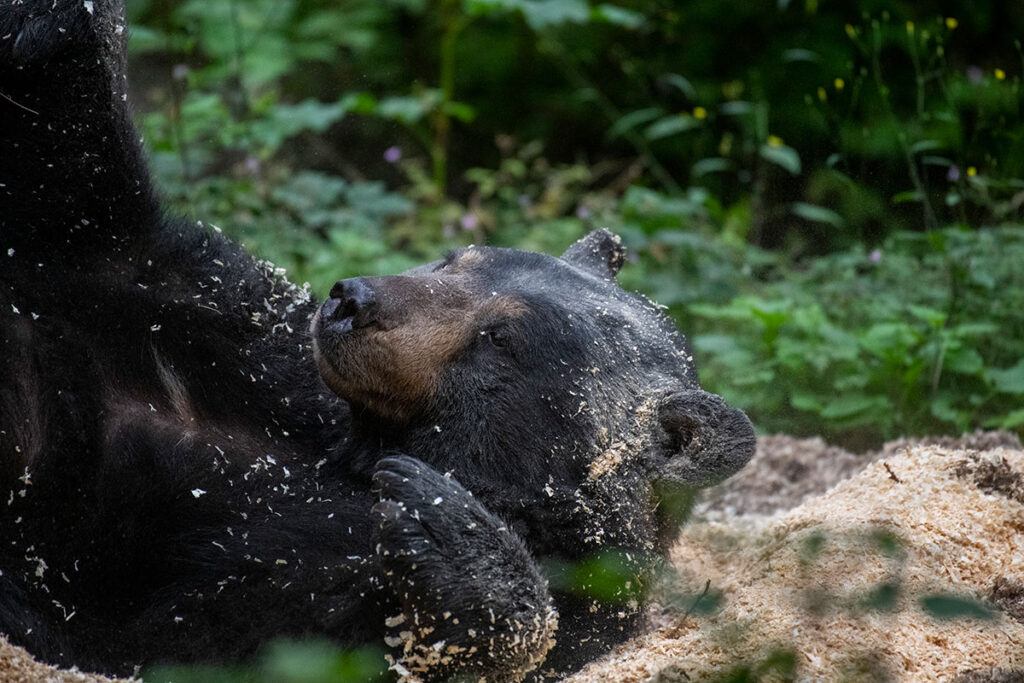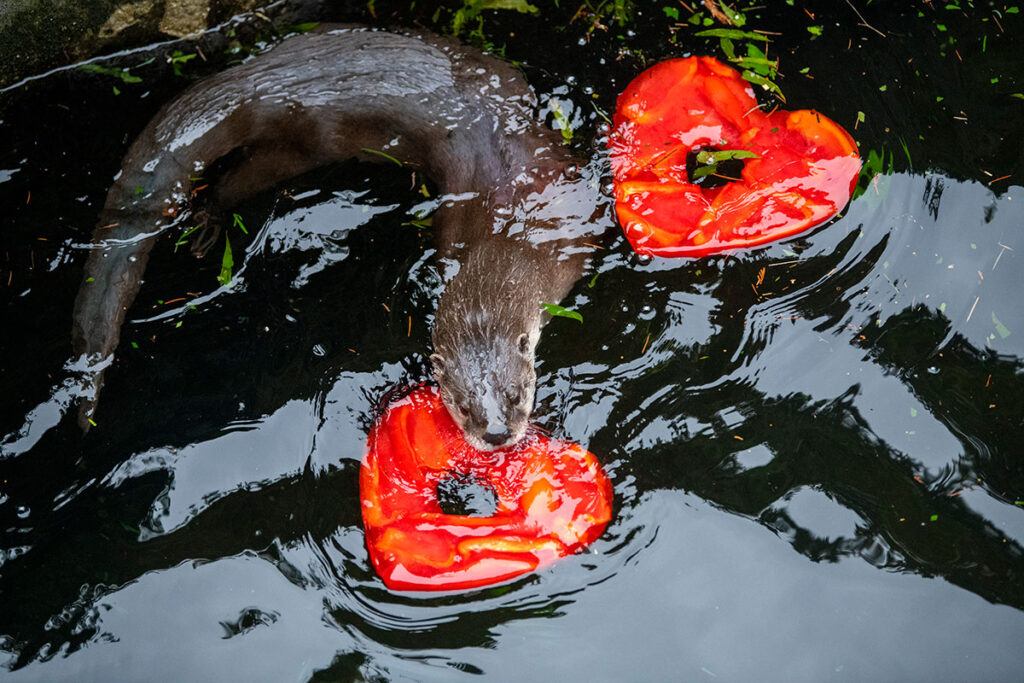The word “enrichment” is said dozens of times a day around Northwest Trek Wildlife Park. As in, “we have the enrichment ready for the otters” or “Aspen the moose really seemed to enjoy her enrichment today” or “we need to create the beavers’ enrichment this afternoon.” Providing enriching experiences is a vital part of providing high-quality animal care at Northwest Trek- but what exactly is enrichment?
“Enrichment items are things like food, smells or toys that enhance the health and well-being of the animals in our care,” said Haley, animal keeper and coordinator of the Behavioral Husbandry Committee at Northwest Trek. “Using these items in combination with knowledge of species’ natural history and behaviors, animal keepers can provide unique experiences that enhance the animal’s overall welfare.”

Haley says the enrichment experience should encourage species-specific behaviors and abilities and allow the animal to exercise choice and control within their environments- a choice all animals and humans must make every day.
For example, grizzly bears in the wild hunt, forage and fish. Haley and the keepers at Northwest Trek encourage grizzlies, Hawthorne and Huckleberry, to use their natural instincts to do those same behaviors. They give the bears items like full carcasses to rip and chew or they hide fruits and vegetables up in trees for them to forage.
“We hide animals’ food in puzzle feeders, freeze it into popsicles, bury it under rocks or hang it from branches to increase their hunting and foraging activity,” said Haley.

Most animals in the wild spend time looking for food from their environment, so this encourages those natural behaviors.
Like their wild counterparts, the black bears go into a state of torpor or hibernation in the winter.
“We provide them with natural nesting materials to use as they dig their den and prepare for their long winter nap,” said Haley.
Keepers create scent trails for animals like the wolves that lead them to their meals hidden in the exhibit. In the wild, wolves use their excellent sense of smell to track prey and communicate their territory.
“We also spray different scents around their habitats to encourage rubbing and scent marking behaviors,” said Haley.
Most of the animals are presented with an enrichment experience every day, and it’s always geared toward encouraging a specific, natural behavior, or set of behaviors, from the animal.
Every enrichment item is vetted by a team of at least three people (keeper, veterinarian, and zoological curator) for safety and appropriateness to each individual animal. The team assesses the safety and quality of the enrichment, as well as the natural behavior the item is designed to encourage.
For food, keepers always monitor for food allergies. If an animal has a strong sense of smell, keepers may use a squirt of perfume or scent rather than half a bottle.
“Creating enrichment is a huge part of our job,” said Haley. “But we really enjoy giving them to the animals and watching them interact with new items.”
Try it at Home
Try giving your pet at home an enrichment. There are many puzzle feeder toys available for purchase, especially for dogs. But even giving a daily diet in new ways can be enriching, like sprinkling your dog’s kibble into an ice tray to give them mental and physical stimulation as they eat.